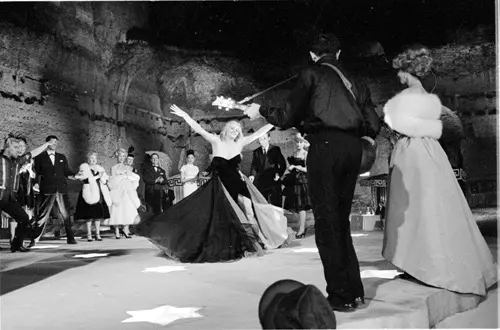A kiss in the fountain
The Rome made famous by La Dolce Vita is a nostalgic and decadent city. Set in the early 1960s, via Veneto is thronged with a range of worldly characters, the famous and lesser-known faces of divas, stars, nobles, the wealthy and, of course, the paparazzi. Marcello, an unscrupulous tabloid reporter and aspiring writer, covers the parties, the excesses and the nightlife, inevitably ending up taking part himself. Fellini gives us one of most memorable scenes that cinema can remember when the diva Anita Ekberg comes across the Trevi fountain, after spinning through the alleyways of the historical centre at night. Stunned by its beauty (how to disagree?) she is unable to resist walking into the water, taking Marcello with her: they kiss. And the scene became a legend.


